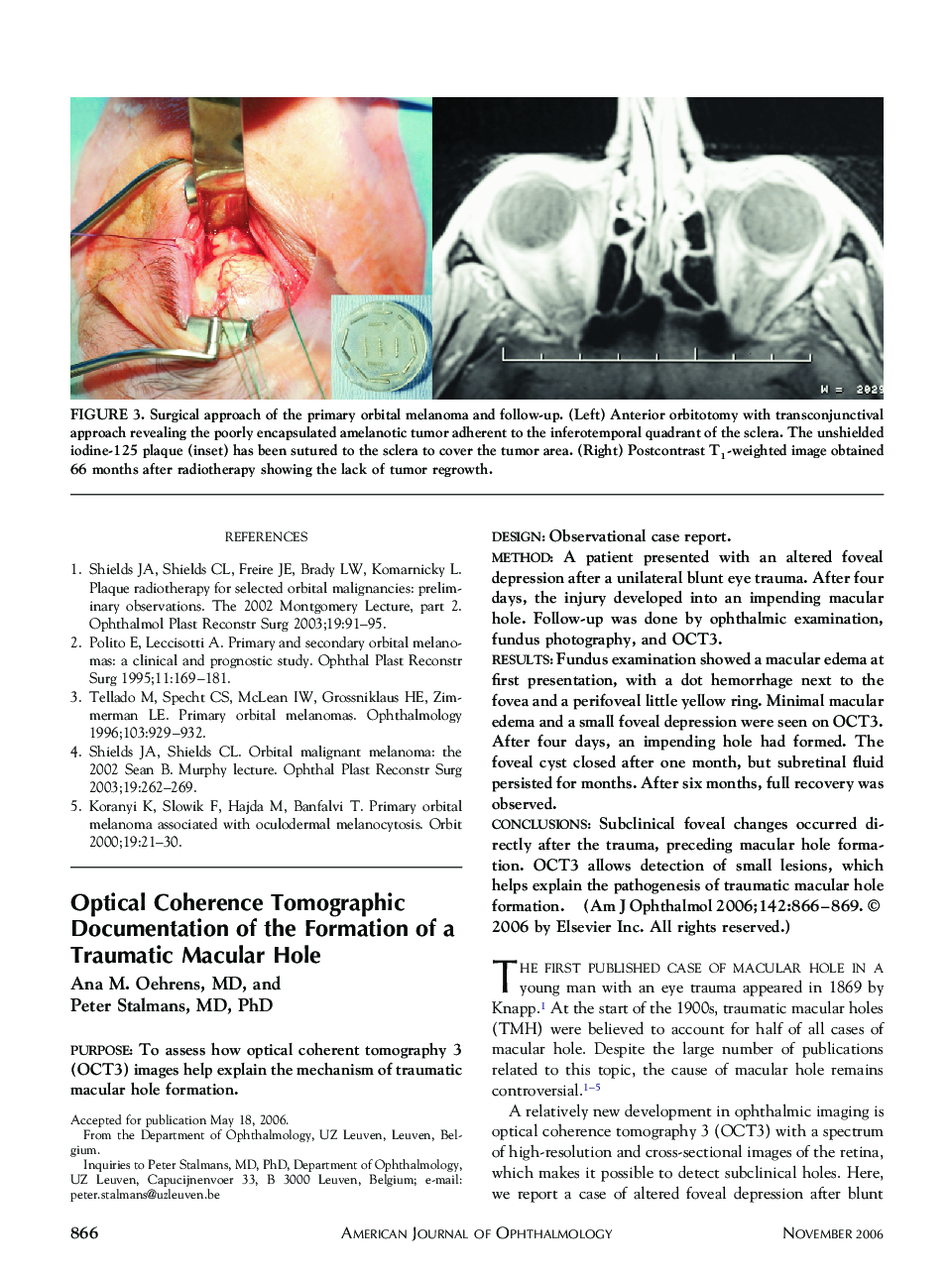| Article ID | Journal | Published Year | Pages | File Type |
|---|---|---|---|---|
| 4005560 | American Journal of Ophthalmology | 2006 | 4 Pages |
PurposeTo assess how optical coherent tomography 3 (OCT3) images help explain the mechanism of traumatic macular hole formation.DesignObservational case report.MethodA patient presented with an altered foveal depression after a unilateral blunt eye trauma. After four days, the injury developed into an impending macular hole. Follow-up was done by ophthalmic examination, fundus photography, and OCT3.ResultsFundus examination showed a macular edema at first presentation, with a dot hemorrhage next to the fovea and a perifoveal little yellow ring. Minimal macular edema and a small foveal depression were seen on OCT3. After four days, an impending hole had formed. The foveal cyst closed after one month, but subretinal fluid persisted for months. After six months, full recovery was observed.ConclusionsSubclinical foveal changes occurred directly after the trauma, preceding macular hole formation. OCT3 allows detection of small lesions, which helps explain the pathogenesis of traumatic macular hole formation.
